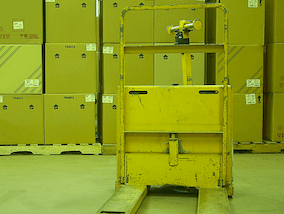An efficient drop-shipping program requires a seamless integration between a retailer and its drop-ship suppliers. Inventory levels, prices, fulfillment details, and order and payment info are types of data that should be shared, in real time, between the parties.
But to do this typically requires third-party providers to connect the systems. Dsco (my company), HubLogix, CommerceHub, SPS Commerce, and GSX are examples.
The various fees from these providers for the data exchange are among the most complicated — and costly — aspects of drop shipping. When used indiscriminately, or applied incorrectly, these fees not only increase overhead but also have unforeseen impacts on a drop-shipping operation’s ability to scale and communicate with trading partners.
In this article, I’ll describe a few of these provider fees and their impact. I’ll also address service-level-agreement fees among suppliers and their retail partners.
Provider Fees
Setup fees can cost enterprise retailers up to $200,000 and their supply partners from $1,000 to $ 2,000, in my experience. Smaller retailers might pay up to $20,000 and their supply partners may or may not have a setup fee. Setup fees cover various integration, on-boarding services, and ad hoc expenses, such as managed integration planning and web development.
Impact: Setup fees are usually fixed no matter the size of the drop-shipping program. This can make them prohibitive for smaller operations. Setup fees can also make potential supply partners less willing to invest in new partnerships that start off costing money. High setup fees are often signs of legacy technology, not standard integrations.
Annual platform fee. For enterprise retailers, annual platform fees can range from $75,000 to $100,000, while small-to-midsize solutions come in at around $15,000 per year. These fees provide an ongoing license to, and customer support for, a solution provider’s software or platform as well as access to future updates.
Impact: Platform fees result in large ongoing overhead for retailers. Additionally, often only client retailers are given access to a particular platform or software suite. This hurts supply partners’ ability to cooperate with retailers because they are unable to access vital data to streamline their operations.
Connection fee. Connection fees range from $50 to $250 per month per supplier and cover the cost of setting up and maintaining the lines between the two data connections. The amount varies depending on the type of connection, with access to a portal sometimes costing less than the use of API. There can also be a fee added to any connections that use an electronic data interchange, an EDI.
Additionally, users are often unable to apply paid connection fees to new trading partners. This increases overhead should retailers drop and add supply partners. Connection fees will likely cover all data interchange costs for SMB retailers but there is often a cap on the number of orders and the amount of data that can be exchanged. For enterprise companies, connection fees generally only cover integration costs, not data and per-order fees.
Impact: Because each connection costs a set amount, these types of fees encourage careful deliberation around the type and number of trading partners a company decides to work with. They can also be powerful price models for encouraging data transfer because, for large companies, they allow for unlimited exchange. However, if you’re implementing a long-tail retail strategy, connection fees are not the best fit since companies are charged for every partner connection. New partner connections equal more fees.
Kilocharacter fee. Kilocharacter fees range from $.05 to $1.00 per every thousand characters sent between trading partners. Both the receiving and sending companies are often charged for the same data. These fees are a holdover from the last century when secure data was costly to transfer, infrastructure was expensive to build, and value added networks — VANs — had high uptime compared to other technologies. They also generally only apply to enterprise drop ship programs that use VANs for data automation.
Impact: Kilocharacter fees place a significant barrier to real-time data exchange between trading partners and simply do not fit with the modern real-time data requirements of drop-shipping. Kilocharacter fees can therefore quickly become a heavy cost burden for large drop-shipping operations and their partners.
Per-order fee. At 35 cents to 50 cents per purchase order for both suppliers and retailers, many SMB drop-ship operations prefer this kind of pay-as-you-go fee model because it requires little initial overhead. It’s also a good fit for long-tail products that sell only a few times every month.
Impact: Per-order fees become a large cost burden as drop-shipping operations scale up because the percentage they take out of revenue remains the same. They can therefore significantly slow growth and erode margins.
Fees Related to Partnership Agreements
Drop-shipping trading partners — suppliers and retailers — execute agreements that often impose performance fees on each other. Here are two examples.
Inventory data SLA penalties. These penalties are meant to increase inventory visibility by charging supply partners for not providing inventory updates within a pre-specified timeframe. Whether or not a supplier has to deal with such penalties depends on the specific trade-partner agreements with their retailers. The general rule, however, is that the larger the retailer and the smaller the supply partner, the more such penalties will be in play.
Impact: Contrary to their intent, SLA penalties often reduce inventory visibility because they encourage suppliers to provide updates merely to avoid fees — whether or not the suppliers have a true inventory count. This in turn can lead to losses from cancellations, underestimation of stock, and late deliveries.
Moreover, SLA penalties can also have a negative effect on trading partner relationships by reinforcing the top-down model of the retailer as an enforcer of compliance, making suppliers less-willing partners. This will reduce the profit margins of drop shipping, which requires an extremely high level of coordination between trading partners to work efficiently.
Picking and handling fees. Picking and handling fees are charged by suppliers to their retail partners (usually smaller retailers) to offset the extra expense of drop-shipping orders. These costs include both the overhead to set up drop-shipping in the first place (many facilities are not designed to handle per-order shipping) as well as the costs of packing and shipping individual orders. Like SLA penalties, the existence and amount of picking and handling fees will depend on individual trade agreements. Generally, however, the larger the supplier and the smaller the retailer, the more likely supply partners will be willing and able to impose such fees.
Impact: While picking and handling fees increase drop-shipping margins for suppliers, they also discourage retailers from selling a supplier’s products, especially if a competitor does not charge such fees. Picking and handling fees also make a brand’s products more expensive for consumers, as retailers typically pass the costs to their customers, which may depress sales.
The Big Picture
Fees don’t just increase costs. They can become major barriers to accurate, real-time data exchange and efficient trading partner relationships. In turn, this can lead to higher cancellation rates, underestimations of inventory, late shipments, and lost customers.
For these reasons, integration fees on a per-connection pricing model could be the best fit for established drop-shipping retailers and suppliers. By removing barriers between trading partners, such a model encourages higher rates of data exchange and can scale with no additional overhead.
After all, the right data-integration fee model can mean the difference between a struggling business and a thriving one.




